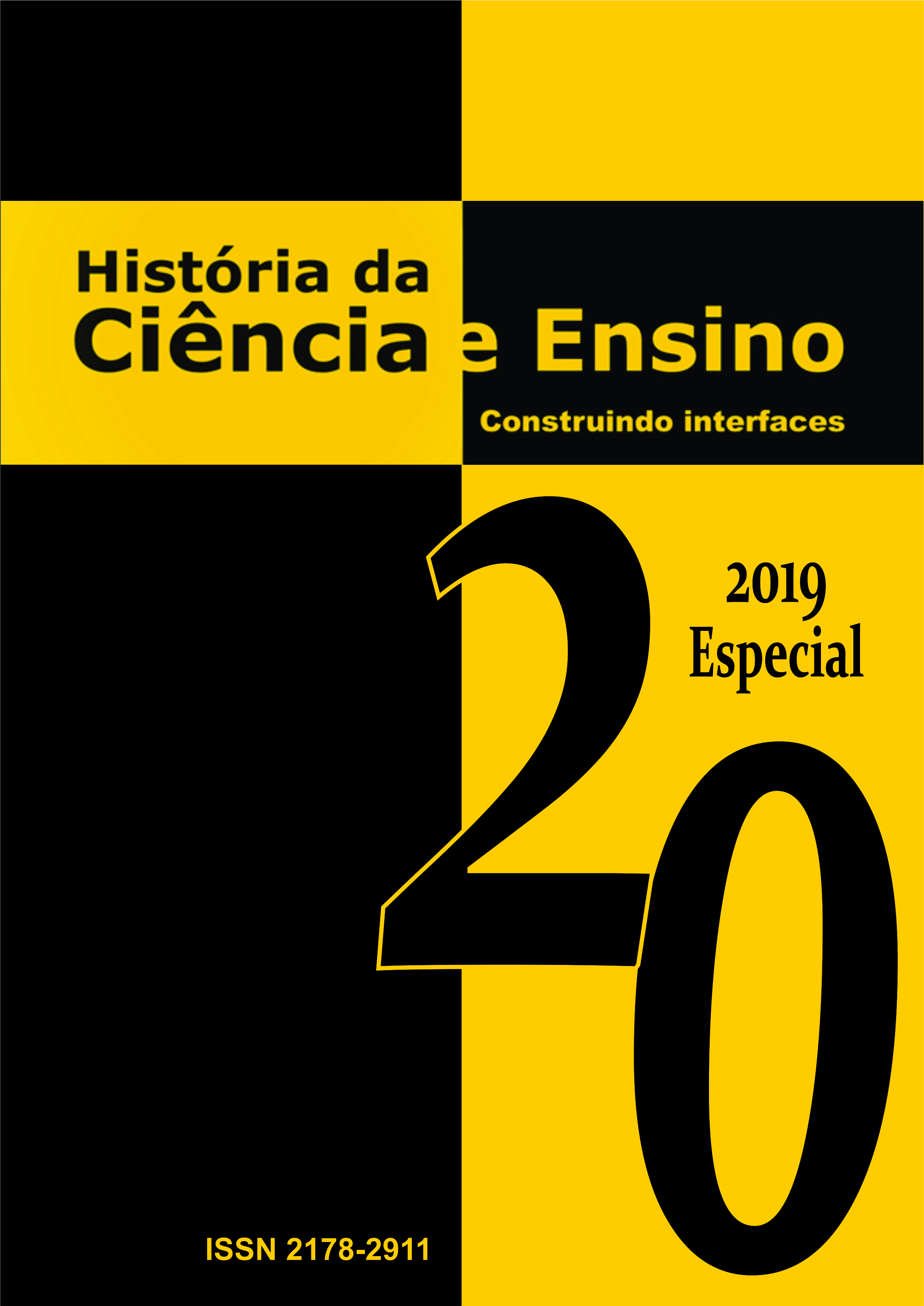DUAS ABORDAGENS PARA A SOLUÇÃO DE PROBLEMAS: SOFTWARE E HISTÓRIA DA CIÊNCIA.
DOI:
https://doi.org/10.23925/2178-2911.2019v20espp316-329Abstract
Resumo
Nosso objetivo é fornecer aos estudantes de física e engenharia dois caminhos - formal e conceitual - para resolução de problemas, e aos estudantes de cursos de outras áreas uma estratégia mais intuitiva e mais fácil de memorizar no longo prazo. Para atingir este objetivo o mesmo problema - a máquina de Atwood composta com quatro corpos - é abordado de duas formas diferentes. A abordagem formal enfoca a obtenção das equações de movimento usando a segunda lei de Newton, as restrições geométricas ou vínculos e um software de computação algébrica. A abordagem conceitual consiste em uma transferência de conhecimento da máquina de Atwood convencional. Neste caso, o raciocínio desenvolvido para resolver o problema é o mesmo que o usado para a máquina simples, só que aplicado mais de uma vez. O mesmo vale para o uso do princípio de Gauss, tal como era compreendido durante o século XIX. Um exemplo numérico mostrará que todas as abordagens levam ao mesmo resultado.
Palavras-chave: máquina de Atwood; Newton; Gauss; física conceitual; habilidades formais.
Abstract
The aim of the present study is to provide Physics and Engineering students with two paths regarding problem solving and non-physics students with a more intuitive solving strategy and easier to memorize in the long term. To achieve this goal, the same problem is approached in two different ways: one, formal and the other, conceptual. The problem is the compound Atwood machine with four bodies. The formal approach focuses on obtaining the equations of motion using Newton's second law, stresses the role of geometric constraints and uses an algebraic computation software. The conceptual approach consists of a knowledge transfer from the simple Atwood machine problem. In this case, the thinking process for solving the compound machine problem is the same as for the simple one but it is applied more than once. The same goes for the use made of the Gauss principle, as it was understood in the 19th century. A numerical example will show that all approaches lead to the same result.
Keywords: Atwood machine; Newton; Gauss; conceptual Physics; formal skills


